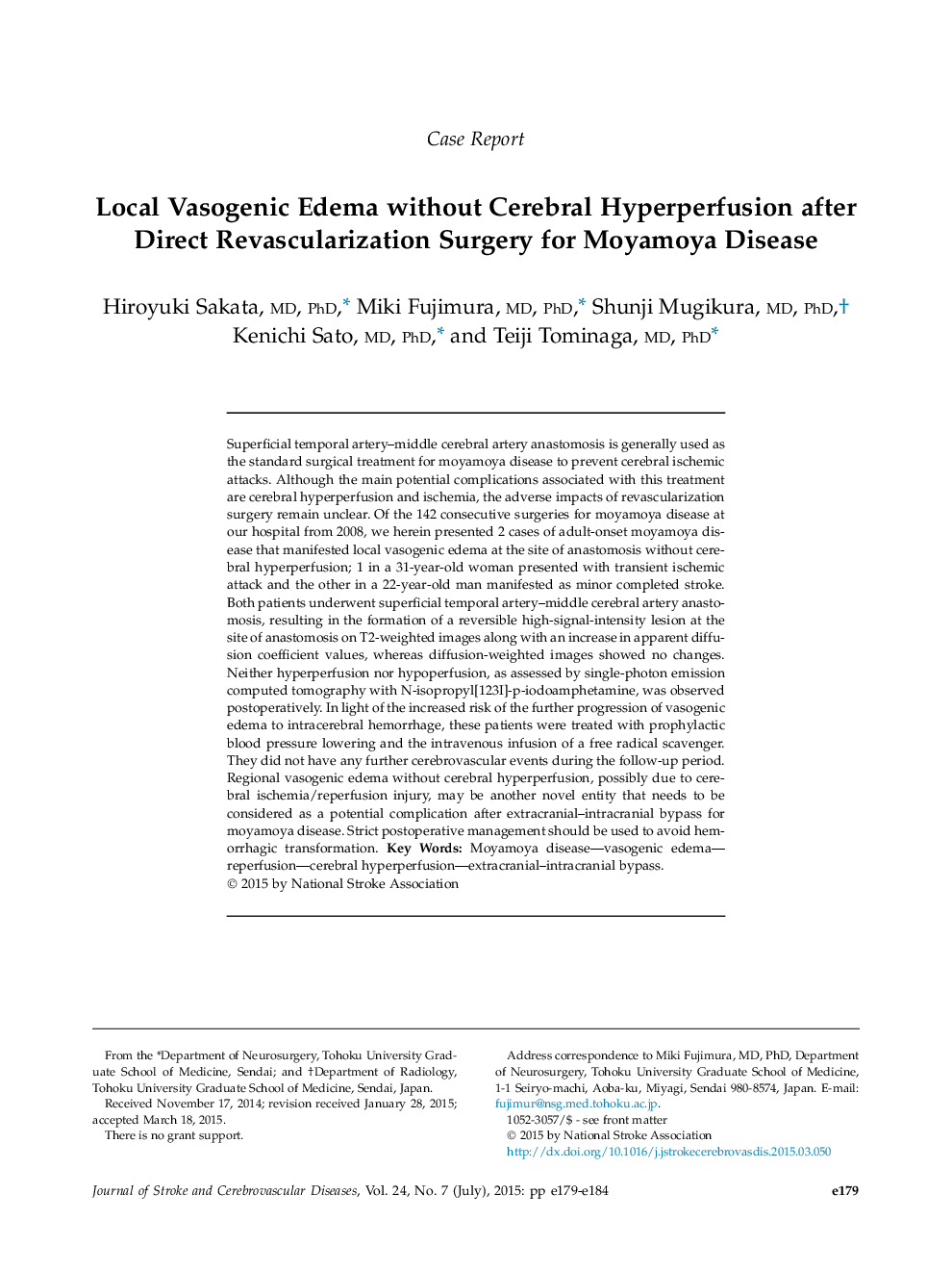| کد مقاله | کد نشریه | سال انتشار | مقاله انگلیسی | نسخه تمام متن |
|---|---|---|---|---|
| 5873789 | 1144649 | 2015 | 6 صفحه PDF | دانلود رایگان |
Superficial temporal artery-middle cerebral artery anastomosis is generally used as the standard surgical treatment for moyamoya disease to prevent cerebral ischemic attacks. Although the main potential complications associated with this treatment are cerebral hyperperfusion and ischemia, the adverse impacts of revascularization surgery remain unclear. Of the 142 consecutive surgeries for moyamoya disease at our hospital from 2008, we herein presented 2 cases of adult-onset moyamoya disease that manifested local vasogenic edema at the site of anastomosis without cerebral hyperperfusion; 1 in a 31-year-old woman presented with transient ischemic attack and the other in a 22-year-old man manifested as minor completed stroke. Both patients underwent superficial temporal artery-middle cerebral artery anastomosis, resulting in the formation of a reversible high-signal-intensity lesion at the site of anastomosis on T2-weighted images along with an increase in apparent diffusion coefficient values, whereas diffusion-weighted images showed no changes. Neither hyperperfusion nor hypoperfusion, as assessed by single-photon emission computed tomography with N-isopropyl[123I]-p-iodoamphetamine, was observed postoperatively. In light of the increased risk of the further progression of vasogenic edema to intracerebral hemorrhage, these patients were treated with prophylactic blood pressure lowering and the intravenous infusion of a free radical scavenger. They did not have any further cerebrovascular events during the follow-up period. Regional vasogenic edema without cerebral hyperperfusion, possibly due to cerebral ischemia/reperfusion injury, may be another novel entity that needs to be considered as a potential complication after extracranial-intracranial bypass for moyamoya disease. Strict postoperative management should be used to avoid hemorrhagic transformation.
Journal: Journal of Stroke and Cerebrovascular Diseases - Volume 24, Issue 7, July 2015, Pages e179-e184
